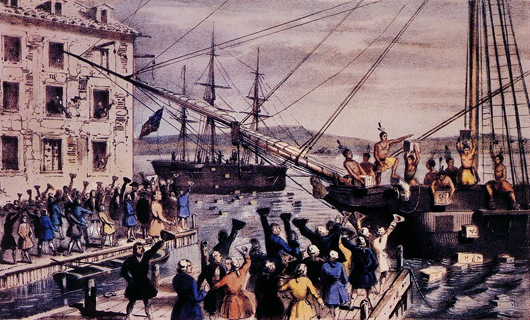
BOSTON (AP) – The Boston Tea Party’s 245th anniversary is next month, but until Tuesday, the gravesites of the colonists who participated in the protest that helped spark the American Revolution have never been noted with any sort of special marker.
The Boston Tea Party Ships and, the City of Boston and the Historic Burying Grounds Initiative placed commemorative markers at final resting places of about 70 people who participated in the Dec. 16, 1773, protest.
They were placed in four of the city’s oldest and most famous cemeteries, including the Central Burying Ground; Copp’s Hill Burying Ground; the Granary Burying Ground; and King’s Chapel Burying Ground.
“This extraordinary event was performed by ordinary people,” Evan O’Brien, creative manager at the museum, told The Boston Globe. “You always hear the names of Paul Revere, John Hancock, Samuel Adams and they were pivotal to Boston’s history and the nation’s history, but the Revolution … and the actions that led up to it, were committed by people as ordinary as you and I.”
Among the gravesites marked were those of the Bradlee brothers — David, Josiah, Nathaniel and Thomas — and their sister, Sarah Bradlee Fulton. She is known as the mother of the Boston Tea Party and is credited with coming up with the idea of disguising the men as Native Americans, according to the museum’s website.
The image on the markers was inspired by Nathaniel Currier’s The Destruction of the Tea at Boston Harbor lithograph (shown at top of page) created in 1846. They will remain on display until the end of the year.
This year is the 245th anniversary of the protest during which colonists protesting taxation without representation threw British tea into Boston Harbor. It is considered a pivotal event that led to the American Revolution.
In the future, organizers said they hope to place commemorative markers at the graves of Boston Tea Party participants buried throughout New England and the United States.
_________
Copyright 2018 Associated Press. All rights reserved. This information may not be published, broadcast, rewritten, or redistributed.

